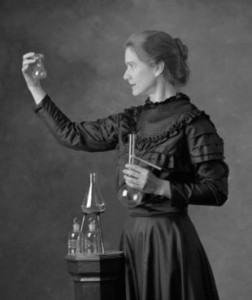In Women At the Top in Science, Valian explicitly explores the reasons why women have underrepresentation in almost every field, and, specifically the mathematic and scientific sections. After politely declining two possibilities of biological based difference and a lower level of women’s engagement with research careers, professor Valian points out the conclusion that the innate tendency to put men and women in distinct categories gives an accumulated advantage to men and disadvantage to women.
The author has done a very good job, using many useful writing skills to convince readers, such as the compliance technique which disputes other hypotheses at first and followed by true point of the essay. Also, she also uses different tones and sequence of vocabulary. For instance, the author decides to quote Howard Georgi, incremental theorist, first, whose opinion is more close to that of writer. At some extent, the author over simplifies the complicate debate of first two hypothesis. The illustration of her point lacks some significant angles.
The article effectively uses the data of average math score of teenager from different genders and races to illustrate the point that mathematical competence can be nurtured. Though Valian mentions the less variable distribution of girls, she avoids digging deeper by focusing on the decreasing gap between top score percentage of boy and girl. However, I argue, that only the skill and certain pattern to solve complex question with known answer can be nurtured, but the ability to create new method to problems with unknown solutions can be hard to train. We can see the cited data is all average score of high school level mathematics. Is this suitable data to discuss people at the top of the mathematic pyramid? It is not reasonable to compare average people rather highly talented individual will pursue a life career as mathematic or hard scientific research. “The differences were especially large at the tails of the distributions, specifically, the top one percent, five percent and ten percent.” This reveals an apparent difference of the ability in the top level between the two genders. They go on to say “Small mean differences combined with modest differences in variable can have a surprisingly large effect on the number of individual who excel.” The relatively tiny gap of ability may lead to important distinction in high-level science work. Because of this, the author shouldn’t disregard the biological part of the complex issue but only focus on social and cognitive sides. We should consider the possibility that there is small biological distinction between two genders which is important to advanced mathematic research.
I do believe the very truth that social element such as schema and advantage play a crucial role in women’s difficulty of advancing to higher position and tend to underestimate women staff’s work. The judgment-change and standard-shift experiment is very strong, clearly indicating the gap between schema of prestigious scientist or engineer and schema of women. Yet there’s still a small flaw: the schema and its outcome is of social background, but the underlying assumption lies on a simplification plane: an idealized social environment in which people intend to be fair without intentional discrimination. Even in a solitude computer model, bias causes huge inequality over time, so we can delude that in the real world, women’s situation is even worse. Therefore, I think she lack certain practical points and should consider adding theories that are suitable for a more realistic world.

